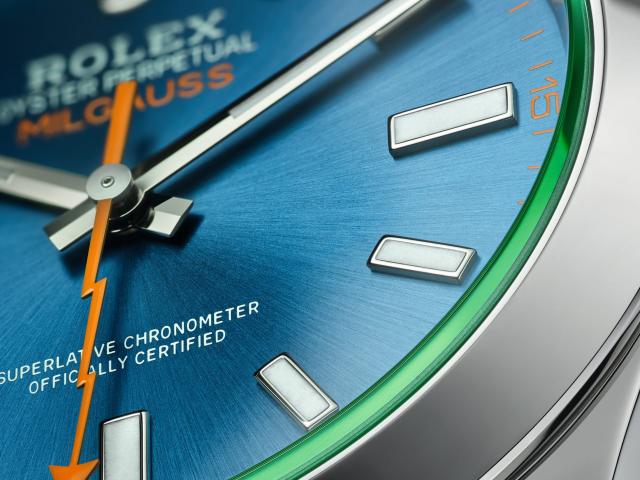In “The Great Rolex Recession: How the Fed Crushed Luxury Watch Demand,” the article discusses the recent decline in the secondary market for luxury watches, particularly Rolex, and how it can be attributed to the Federal Reserve’s aggressive monetary tightening. The article explains that the WatchCharts market index has slumped 32% from its peak in March 2022, and higher interest rates have fueled fears of an economic downturn, causing investors to scale back luxury spending. The downturn in the crypto market has also played a role in hurting demand for luxury watches. Despite the recent declines, prices have still climbed considerably higher over the longer term, outperforming the stock market.
The Great Rolex Recession: How the Fed Crushed Luxury Watch Demand
Introduction
Welcome to an in-depth article on the Great Rolex Recession and how the Federal Reserve’s actions have impacted the luxury watch market. In this article, we will explore the background of the luxury watch market, the slump in the secondary market, the role of the Federal Reserve’s interest-rate increases, the impact of higher interest rates on luxury spending, the downturn in the crypto market, the decline in luxury watch prices and performance, the worst declines in costliest timepieces, and the comparison of luxury watches and stock market performance. We will also discuss the chronometer brands affected by the recession, the rise of luxury watches during the pandemic period, record highs and pre-owned watch sales, the long-term price trends of luxury watches, and conclude with a summary of the Great Rolex Recession and the long-term prospects for the luxury watch market.
Background
To understand the impact of the Federal Reserve’s actions on luxury watch demand, it is important to have an overview of the luxury watch market. In recent years, there has been a boom in the demand for luxury watches, driven by various factors such as their status symbol appeal, craftsmanship, and rarity. Rolex, along with other top luxury watch brands, has been at the forefront of this demand, with their timepieces becoming highly sought after by collectors and enthusiasts.
The Slump in the Secondary Market for Luxury Watches
One of the key indicators of the impact of the Federal Reserve’s actions on luxury watch demand is the slump in the secondary market for luxury watches. The WatchCharts market index, which tracks the prices of 60 timepieces from top brands including Rolex, Patek Philippe, and Audemars Piguet, has experienced a significant decrease of 32% from its all-time high in March of last year. This slump can be attributed to the elevated interest rates and heightened economic uncertainties that have sapped demand for luxury timepieces.
Role of the Federal Reserve’s Interest-rate Increases
The Federal Reserve’s interest-rate increases have played a crucial role in the slump of the luxury watch market. The central bank’s aggressive monetary tightening over the past five quarters has sparked fears of an economic downturn, leading investors to scale back luxury spending and increase savings. These interest-rate increases have had a negative impact on luxury watch demand, as consumers hesitate to make significant purchases during economic uncertainties.

Impact of Higher Interest Rates on Luxury Spending
Higher interest rates have had a direct impact on luxury spending. During economic uncertainties, investors tend to exhibit cautious behavior, fearing a downturn in the economy. This fear has led to a reduction in luxury spending and a boost in savings as consumers prioritize financial stability. The connection between interest rates and luxury watch demand is evident as higher interest rates deter potential buyers from investing in luxury timepieces.
Downturn in the Crypto Market and its Effect on Watch Demand
In addition to the Federal Reserve’s interest-rate increases, the downturn in the crypto market has also had an effect on luxury watch demand. The crypto market, which experienced a decline precipitated by rate rises, has further dampened the demand for watches. This downturn in the crypto market has demonstrated a link between the crypto market and the watch market, as both markets are influenced by similar economic factors.

Decline in Prices and Performance of Luxury Watches
The decline in luxury watch prices and performance is another significant consequence of the Great Rolex Recession. Watch price declines have been observed across different price brackets, with the costliest timepieces suffering the worst declines. For instance, watches in the $50,001-$100,000 price bracket have seen a slump of over 15% in the past 12 months. These declines have been compared with the performance of the stock market, and it is evident that luxury watches have underperformed stocks since the beginning of the Federal Reserve’s interest-rate increases.
Worst Declines in Costliest Timepieces
The costliest timepieces have experienced the worst declines in value. Watches in the $50,001-$100,000 price bracket have seen a slump of over 15% in the past year, while those in the $10,001-$20,000 group fell by 10.4%. The $5,001-$10,000 bracket saw a decline of 6.8%. These declines highlight the impact of the Great Rolex Recession on the luxury watch market, as even the most expensive timepieces are not immune to the economic downturn.

Comparison of Luxury Watches and Stock Market Performance
The comparison between luxury watches and stock market performance reveals the extent to which the luxury watch market has been affected by the Federal Reserve’s actions. While luxury watches have experienced declines in value, the stock market, represented by the S&P 500 index of US large-cap shares, has seen an increase of about 8% since the beginning of the interest-rate increases. This comparison emphasizes the significant impact of the Great Rolex Recession on the luxury watch market.
Chronometer Brands Affected by the Recession
In terms of specific brands, certain chronometer brands have been more affected by the Great Rolex Recession than others. The Rolex Market Index, which tracks the top 30 most valuable models, has experienced a decline of 12.5% from a year ago. Similarly, the Patek Philippe index has dropped by 18%, while Audemars Piguet has seen the sharpest losses, with a decline of almost 20% year-on-year. These figures indicate the varying degrees to which different luxury watch brands have been impacted by the recession.

The Rise of Luxury Watches during the Pandemic Period
Interestingly, luxury watches experienced a rise in demand during the pandemic period. As surplus cash flowed into various alternative investments, luxury watches were also swept along. Prices of Rolexes, Patek Philippes, and Audemars Piguet reached record highs in early 2022, and pre-owned watch sales reached $22 billion, accounting for nearly a third of the $75 billion luxury watch market. However, the pandemic-induced rise in luxury watch demand was short-lived and was followed by the Great Rolex Recession.
Record Highs and Preowned Watch Sales
During the pandemic period, luxury watches reached record highs in terms of prices and sales. The demand for pre-owned watches played a significant role in this trend, as individuals sought to invest in luxury timepieces while leveraging the value and rarity of pre-owned pieces. The surge in pre-owned watch sales, reaching $22 billion in 2021, highlighted the strong interest in luxury watches as an alternative investment.
Long-term Price Trends of Luxury Watches
Despite the declines experienced in recent years, the long-term price trends of luxury watches remain positive. Luxury watches have performed well compared to traditional investment categories over the long term. Average prices in the secondhand market for top models from Rolex, Patek Philippe, and Audemars Piguet rose at an annual rate of 20% from August 2018 to January 2023. This is in contrast to the annual rate of 8% for the S&P 500 index, indicating that luxury watches can still provide value and returns to investors over the long term.
Conclusion
In conclusion, the Great Rolex Recession, caused by the Federal Reserve’s interest-rate increases, has had a significant impact on luxury watch demand. The slump in the secondary market, the decline in luxury watch prices, and the underperformance compared to the stock market are all indicators of this impact. However, it is important to note that luxury watches have shown resilience over the long term, and the demand for these timepieces may rebound as the economy stabilizes. The luxury watch market continues to be an intriguing area for investors and enthusiasts alike, and its long-term prospects remain promising.


